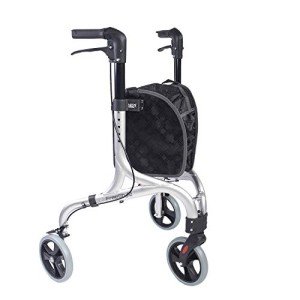Walking Aids: Enhancing Mobility and Independence
Walking aids are important tools developed to help people with mobility difficulties, enabling them to move easily and easily. These gadgets can substantially improve autonomy, improve posture, lower the danger of falls, and increase general lifestyle. This article digs into various kinds of walking aids, their benefits, rollator for walking factors to consider for use, and suggestions for choosing the ideal aid. Additionally, an extensive FAQ section addresses common inquiries about walking aids.
Types of Walking Aids
Walking aids been available in various types to cater to different requirements and preferences. Below is a categorized list of the most typically used walking aids:
1. Canes
- Standard Canes: A single straight cane for fundamental assistance.
- Quad Canes: Canes with a four-pronged base for increased stability.
2. Walkers
- Requirement Walkers: Frame-like devices that provide support on all sides, fantastic for those with limited strength.
- Rolling Walkers (Rollators): Equipped with wheels, these permit users to stroll with less effort and come with seats for Ruby Aluminum Shopping Rollator - 36L Capacity Cart resting.
3. Crutches
- Axillary Crutches: Used under the arms; ideal for momentary mobility problems.
- Forearm Crutches (Lofstrand Crutches): Designed for long-lasting use, they need grip strength and are lighter than axillary crutches.
4. Wheelchairs
- Handbook Wheelchairs: Require user effort to move, supplying versatility and independence.
- Electric Wheelchairs: Battery-powered alternatives appropriate for users with limited arm strength.
Benefits of Walking Aids
Walking aids offer various advantages that add to improved mobility, safety, and self-reliance. Some essential benefits include:
- Increased Stability: Walking aids supply extra points of contact with the ground, lowering the danger of falls.
- Enhanced Mobility: They make it possible for motion over higher distances, enabling people to participate in social activities and daily tasks.
- Discomfort Reduction: Properly fitted walking aids can reduce pressure on joints and lower pain connected with various medical conditions.
- Enhanced Confidence: Using a walking aid can improve an individual's confidence, encouraging them to explore their environment without fear.
- Posture Support: Aids assist preserve proper positioning and posture, lowering pressure on the back and hips.
Considerations When Choosing Walking Aids
Choosing the best walking aid is important for safety and efficiency. Here are some aspects to consider:
1. Specific Needs
- Examine the level of support needed for mobility.
- Think about whether temporary or long-term assistance is required.
2. Environment
- Examine the terrain and surface areas (indoor vs. outdoor) where the aid will be utilized.
- Guarantee that the walking aid appropriates for stairs, ramps, or uneven surfaces.
3. Weight and Portability
- Examine the weight of the walking aid and if it can be transported quickly.
- Lightweight 4-Wheel Walker with Seat for Easy Mobility alternatives are preferable for those who might need to lift or stow the aid frequently.
4. Comfort and Fit
- Guarantee the walking aid is adjustable and fits the user's height.
- Consider grips, armrests, or seats that provide comfort for extended use.
5. Budget plan
- Identify a spending plan for the walking aid while thinking about the quality and features essential for the user's safety and comfort.
FAQs About Walking Aids
1. Who should use walking aids?
Walking aids appropriate for people recuperating from surgery, those with persistent discomfort, seniors experiencing balance issues, or anybody with a mobility obstacle.

2. How do I pick the ideal height for a walking aid?
When standing directly with excellent posture, the top of the walking cane or Four-wheel walker need to line up with the wrist bone. A healthcare specialist can supply assistance during fitting.
3. Can I use a Seat Walker on stairs?
While it's typically not safe to use a walker on stairs, some walkers are created specifically for stairs with features that improve stability. Always seek advice from with a physical therapist for individualized suggestions.
4. How can I preserve my walking aid?
Frequently look for loose parts, wear and tear, and clean the device according to the manufacturer's instructions to guarantee safety and durability.
5. Do walking aids assist with balance?
Yes, walking aids can supply the essential assistance and stability, assisting to prevent falls and help with well balanced movement.
Walking aids are invaluable devices that empower individuals with mobility challenges to keep self-reliance and enhance their quality of life. By comprehending the numerous kinds of walking aids, their benefits, and vital factors to consider for choice, users can make informed choices tailored to their requirements. Whether for momentary support or long-lasting use, the ideal walking aid can change day-to-day routines and boost general wellness.
| Type of Walking Aid | Functions | Best For |
|---|---|---|
| Canes | Single or quad bases | Moderate assistance |
| Walkers | Fixed or rolling alternatives | Lower body weak point |
| Crutches | Axillary or lower arm models | Short-term mobility issues |
| Wheelchairs | Manual and electric options | Serious Lightweight 4-Wheel Mobility Walker with Seat constraints |
Accepting the ideal walking aid can lead to newfound freedom and a more active lifestyle, cultivating self-reliance and social engagement. As constantly, consultations with health care specialists can provide customized suggestions to ensure safety and effectiveness in using walking aids.







